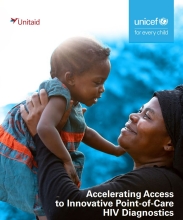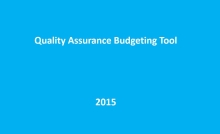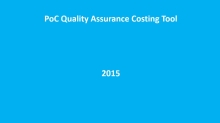No Time to Wait

It is believed that 1.7 million children around the world are living with HIV. 1 If these children are not found, put on treatment and given the care that they need, they will not live long, healthy lives. Whether your organisation is already working to support HIV testing among children or you would like to become more actively involved, this framework is here to help. This framework focuses on early infant diagnosis (EID). What does that mean? In short, any child that could have been exposed to HIV before, during or after their birth, needs to be tested for HIV as soon as possible. Without treatment, HIV progresses very rapidly in young children and they can become unwell and die young. If they are tested and get an early HIV diagnosis, they can be given the treatment they need and their families can be supported to help make sure that they stay healthy. New infant diagnosis tools now exist called point-of-care (POC) machines that make it easier to test infants for HIV. Using a POC machine, a small drop of blood can be taken from the infant’s foot and the results given to the family on the same day. Now that these machines exist and have been shown to work, we need more of them in strategic places and we need to be sure that parents and caregivers know about them, can access them, and are supported throughout the process. Community-based civil society organisations (CSOs) like yours can play an important part in working with communities to help make the most of this opportunity to improve the lives of infants living with HIV.




